In the heart of Washington, D.C., stands The White House, a symbol of American power and history. Built in 1792, it has witnessed centuries of political evolution. Steeped in tradition, this iconic residence holds intriguing secrets waiting to be uncovered.

From its earliest days, The White House has been a silent witness to the ebb and flow of American history. Constructed during George Washington’s presidency, it has evolved alongside the nation, mirroring the changes and challenges faced by the United States. Beyond its grand facade lie stories that bring history to life.
As you delve into these 20 fascinating fun facts, you’ll uncover a tapestry of anecdotes that span presidencies and eras. Transitioning from the era of horse-drawn carriages to the age of space exploration, The White House has been a constant, adapting to the times. Embrace the journey as we explore the captivating tales woven into the very fabric of this iconic landmark.
Also read this: 20 Astonishing Fun Facts About University of Washington
Quick Fun Facts About White House
- White House is in Washington, D.C., and serves as the official home and workplace of the U.S. President.
- It has 132 rooms, including the Oval Office, where the President works.
- The White House has hosted famous guests like royalty, celebrities, and world leaders.
- The building has been renovated and expanded several times since its construction in 1792.
- The White House has hosted many events, including state dinners and ceremonies.
- It has a movie theater, bowling alley, and swimming pool.
- The iconic South Portico overlooks the National Mall and Washington Monument.
- The White House has its own flower shop, and a staff of chefs prepares meals for the First Family.
- The building is white because of a layer of paint applied to protect its stone exterior.
- The White House has a basketball court for recreational activities.
- It has a visitor center for tourists to learn about its history and significance.
- The Presidential pets have included dogs, cats, birds, and even a raccoon.
- The White House receives thousands of letters and emails every day.
- The building has been the setting for historical events, speeches, and press conferences.
- It has a secret underground bunker for emergency situations.
- The Rose Garden is a famous outdoor area used for ceremonies and press conferences.
- The White House was designed by James Hoban, an Irish-born architect.
- Every President since John Adams has lived in the White House.
- The White House receives millions of visitors annually.
- The building is a symbol of American democracy and leadership.
Also Read this: Crazy and Fun Facts about Texas – The Lone Star State
A Comprehensive Look at its History and Details
Historical Background
The White House was designed by Irish-born architect James Hoban, who won a national contest in 1792 to be the architect for the president’s residence.
Construction commenced in October 1792, and though President Adams and his family moved in by 1800, the building was not fully completed at that time.
Naming and Color
The official name “The White House” was given by President Theodore Roosevelt in 1901. Before that, it had various names like the “President’s Palace” and the “Executive Mansion.”
Originally covered with lime-based whitewash for protection, it was painted with white lead in 1818, leading to its distinctive color.
Architecture and Dimensions
The White House has 132 rooms, 28 fireplaces, 412 doors, and is approximately 55,000 square feet in size.
The White House is six floors tall, with a kitchen capable of serving 140 dinner guests and hosting over 1,000 people for hors d’oeuvres.
Rooms and Features
There are 16 family guest rooms and 35 bathrooms.
The White House includes a bowling alley, a screening room, two pools, and three elevators.
Unique Facts and Events
Andrew Jackson, the seventh president, is featured on the $20 bill.
Despite myths, President Theodore Roosevelt did not ban Christmas trees; the family simply did not include one until 1902 when his son started a Christmas tree tradition.
Historical Events
The first White House burned on August 24, 1814, during the War of 1812, set ablaze by British troops.
Architect James Hoban oversaw the rebuilding, completed in 1817 during President James Monroe’s term.
Ownership and Inhabitants
The National Park Service owns the White House, part of the President’s Park. The president and family receive $100,000 for redecorating.
Only the president and the president’s family reside in the White House; no other staff live there.
Contemporary Information
The White House is located at 1600 Pennsylvania Ave. NW, Washington, D.C.
As of July 2022, the Biden administration has 474 staff members, while the Trump administration had 377 White House office staff, according to the Annual Report to Congress on White House Office Personnel and NPR.
Also read this: 20 Astonishing Fun Facts About University of Washington
The White House, an iconic symbol of American history and power, holds numerous intriguing stories and secrets within its walls. Let’s delve into 20 fascinating fun facts about this historic residence.
Architectural Marvel
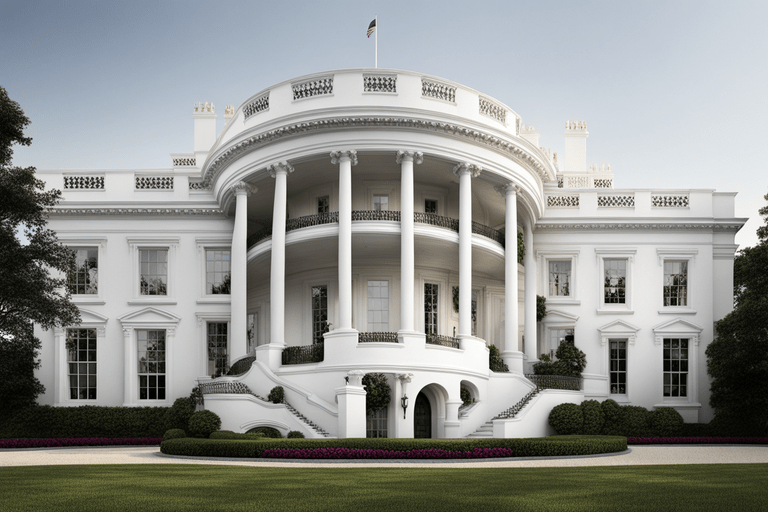
The White House, meticulously designed by James Hoban and completed between 1792 and 1800, stands as a timeless masterpiece of Neoclassical architecture. Imposing columns and intricate details, reminiscent of ancient Greek and Roman styles, adorn its facade, creating an architectural marvel that transcends time.
Hoban, an Irish-born architect, won a competition to design the executive mansion, and his vision has left an indelible mark on the nation’s history. The incorporation of classical elements not only reflects the ideals of the early republic but also serves as a symbolic bridge between the democratic principles of the new nation and the enduring legacy of classical civilizations.
Transitioning from the drawing board to reality, the White House seamlessly blends historical inspiration with the practical requirements of a presidential residence, encapsulating the spirit of a fledgling democracy in its very structure.
A Timeless Design
Transitioning through time, the White House’s architectural elegance stands as a compelling testament to the enduring vision of its designer, James Hoban. As the years have unfolded, this iconic structure has weathered the challenges of history, evolving from a mere architectural concept into a symbol of democratic resilience.
Hoban’s meticulous planning and attention to detail are evident in every facet of the White House, from its neoclassical façade to the well-thought-out interior spaces. Over the decades, the White House has witnessed an ever-changing political landscape, serving as a backdrop to significant events, from presidential inaugurations to historic diplomatic meetings.
The architectural continuity, carefully preserved and occasionally enhanced through renovations, allows visitors to traverse time as they explore the corridors of this symbolic residence. Moreover, the White House’s ability to adapt to the needs of each presidential occupant while maintaining its core design principles showcases a harmonious transition between tradition and progress.
This enduring architectural legacy not only pays homage to the past but also ensures that the White House remains a living monument, embodying the spirit of the nation through the ages.
Original Name
Initially referred to as the “President’s Palace” and the “Executive Mansion,” the White House underwent a nomenclature transition that mirrored the evolving identity of the United States. This architectural gem, nestled in the heart of Washington, D.C., was officially bestowed with its current name in 1901 during the Theodore Roosevelt administration.
The decision to change its designation reflected not only a shift in terminology but also a deeper recognition of the White House as a symbol of democratic governance. The adoption of the name “White House” marked a departure from the earlier monikers, emphasizing a sense of openness and accessibility to the American people. Transitioning from the grandeur associated with a “palace” to a more egalitarian “house” spoke volumes about the nation’s commitment to democratic principles.
This change in nomenclature echoed the broader cultural and political shifts occurring in the early 20th century. Aligning the White House more closely with the ideals of a government of the people, by the people, and for the people. The official christening of the White House solidified its identity as not just a presidential residence. A symbol of the nation’s democratic ethos.
Name Evolution
The evolution of the White House’s nomenclature mirrors the evolution of the nation itself, marking significant shifts in its identity. Initially known as the “President’s Palace” and the “Executive Mansion,” these early designations reflected a time when the United States was still shaping its political and cultural character.
The choice of the term “palace” suggested a certain regality and grandeur, perhaps influenced by the precedents set by European monarchies. However, as the young republic asserted its commitment to democratic principles, there arose a need for a more egalitarian and symbolic name. In 1901, during the Theodore Roosevelt administration, the official adoption of the name “White House” represented a pivotal moment in this transition.
This shift in nomenclature was not merely a linguistic change but a deliberate embrace of a more democratic ethos, aligning the presidential residence with the nation’s evolving self-perception. The White House, through its name, became a tangible expression of the United States’ commitment to a government that derived its legitimacy from the people it served.
This linguistic evolution underscores the dynamic nature of the nation’s identity, illustrating how language itself can be a powerful agent of transformation in the broader narrative of American history.
Fire Strikes
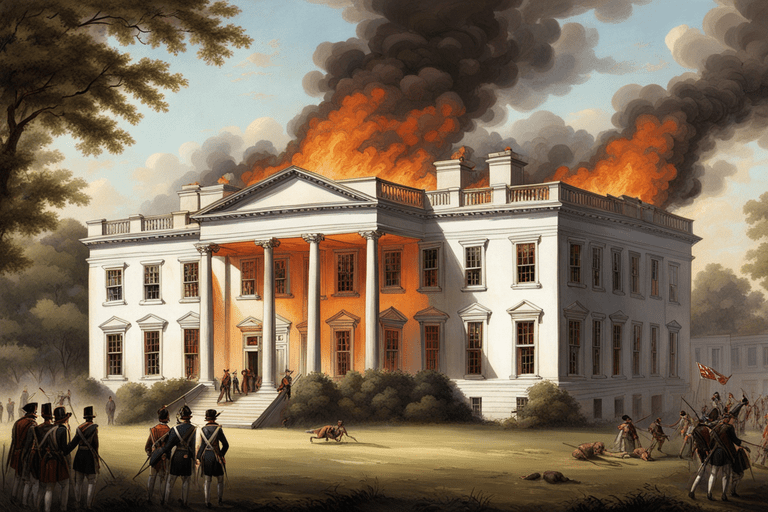
In 1814, during the War of 1812, British forces set fire to the White House, causing significant damage. This devastating event marked a dark chapter in the history of the presidential residence, with flames engulfing its walls and leaving the structure in ruins.
However, in the aftermath of destruction, a resilient spirit emerged, embodying the fortitude of the American people. Despite the setback of seeing their symbolic seat of government in ashes, the decision was made to rebuild the White House. The reconstruction effort, led by skilled craftsmen and architects, transformed the charred remnants into a renewed symbol of national pride.
Transitioning from devastation to reconstruction, the White House not only regained its physical form but also emerged stronger, reflecting the unwavering determination to preserve the ideals for which it stood. The resilience displayed during this challenging period echoed the broader national sentiment, reinforcing the belief that the United States could overcome adversity and emerge with renewed strength.
The rebuilt White House thus became a living testament to the indomitable spirit that defines the American experience, showcasing a commitment to resilience and perseverance in the face of historical challenges.
Rebuilding and Resurgence
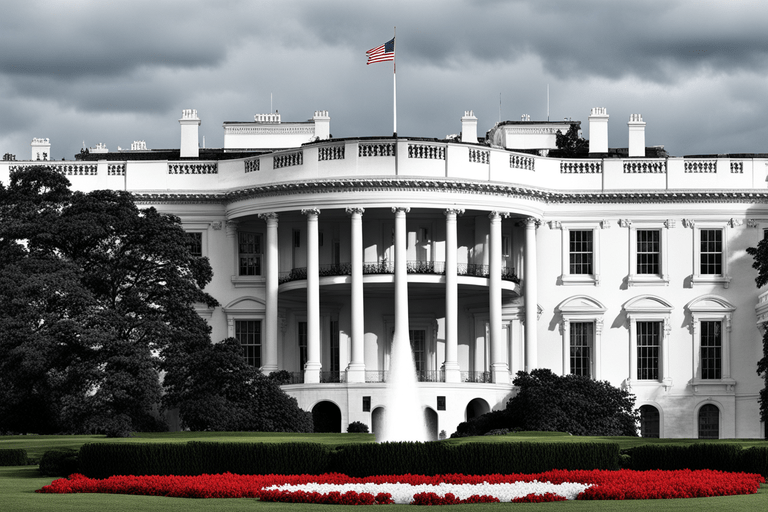
Out of the ashes emerged a stronger, more resilient White House, symbolizing the nation’s ability to overcome adversity. The meticulous reconstruction effort, led by architect James Hoban, not only restored the physical structure but also infused new elements that reflected the evolving identity of the United States.
Transitioning from the devastation caused by the British forces in 1814, the rebuilt White House showcased innovative architectural enhancements. These included reinforced materials to mitigate the risk of future fires, symbolizing a commitment to learning from past challenges. The redesigned interiors also featured improvements, with a keen eye towards both functionality and aesthetics.
This transformative phase in the White House’s history marked not only a physical reconstruction but also a metaphorical rebirth—a transition from vulnerability to strength. The resilient spirit exhibited during this period became a source of inspiration for generations to come, a reminder that from adversity arises the potential for growth and renewal. As the White House rose from its ashes, it became a living symbol of the nation’s ability to adapt, rebuild, and emerge even more robust in the face of adversity.
Indoor Bowling Alley
In 1947, during President Harry S. Truman’s tenure, the White House underwent a recreational transformation that left an enduring mark on its history. An avid bowler himself, President Truman decided to enhance the basement, adding a one-lane bowling alley that would become a distinctive feature of the presidential residence.
This recreational addition not only showcased the President’s personal interests but also demonstrated a desire to infuse a sense of leisure and camaraderie within the White House walls. The transition from a traditional basement space to a recreational haven marked a departure from the solely formal functions of the White House, providing a unique space for relaxation and enjoyment.
Today, this historic one-lane bowling alley continues to serve as a gathering place for White House staff, preserving a tangible link to the past while contributing to the daily life and culture of the presidential residence.
Presidential Pastime
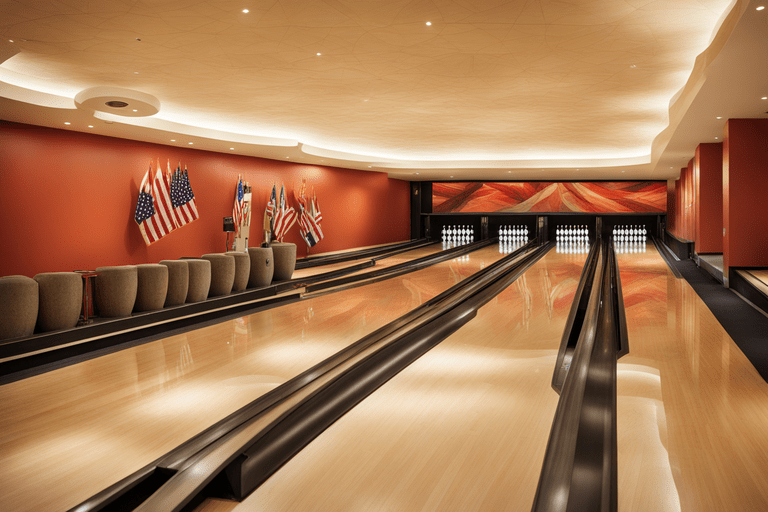
Transitioning from statesmanship to sports, the White House’s bowling alley provides a recreational haven for its occupants, fostering a sense of camaraderie. President Harry S. Truman’s decision to install the one-lane bowling alley in 1947 marked a notable departure from the formalities of political life, introducing an element of leisure and social interaction within the presidential residence.
This recreational addition served as a transitional space, where leaders could temporarily set aside the weighty matters of state to engage in a friendly game of bowling. Over the years, the bowling alley has witnessed moments of relaxation and informal discussions, acting as a subtle yet impactful bridge between the formal duties of the presidency and the human aspects of those who inhabit the White House.
In this transition from governance to recreation, the bowling alley stands as a symbol of the multifaceted nature of life within the presidential walls, adding a touch of informality and shared enjoyment to the serious business of running the nation.
Easter Egg Roll Tradition
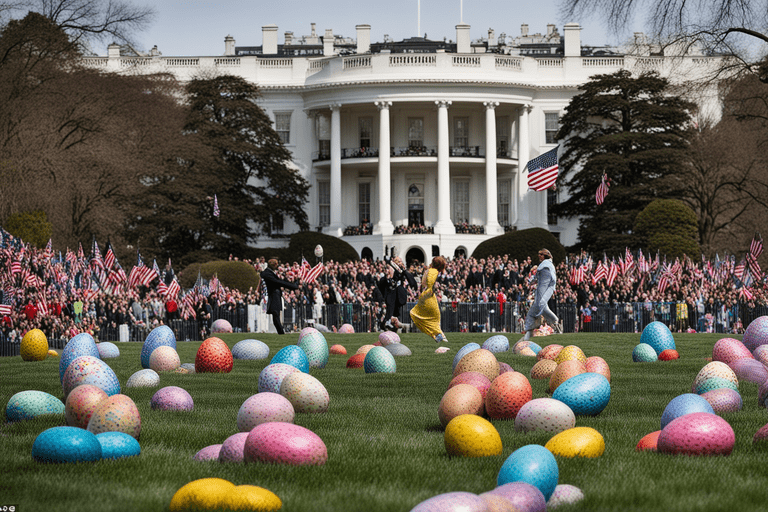
One of the longest-standing White House traditions is the annual Easter Egg Roll on the South Lawn, dating back to 1878. President Rutherford B. Hayes officially opened the White House grounds to children for egg rolling on Easter Monday, establishing a beloved event that has withstood the test of time.
This cherished tradition has undergone various transitions and expansions, evolving into a grand celebration that brings together families from across the nation. Over the years, the Easter Egg Roll has seen the introduction of themed activities, live entertainment. Even the inclusion of environmentally friendly practices, such as using eco-friendly materials for the commemorative eggs.
The transition from its humble beginnings to a nationally recognized event reflects not only the enduring nature of this tradition. But also the adaptability of the White House in incorporating new elements while preserving the essence of a time-honored celebration. This remarkable evolution has turned the Easter Egg Roll into a symbol of unity, joy, and the enduring spirit of tradition within the White House.
Rolling Through History
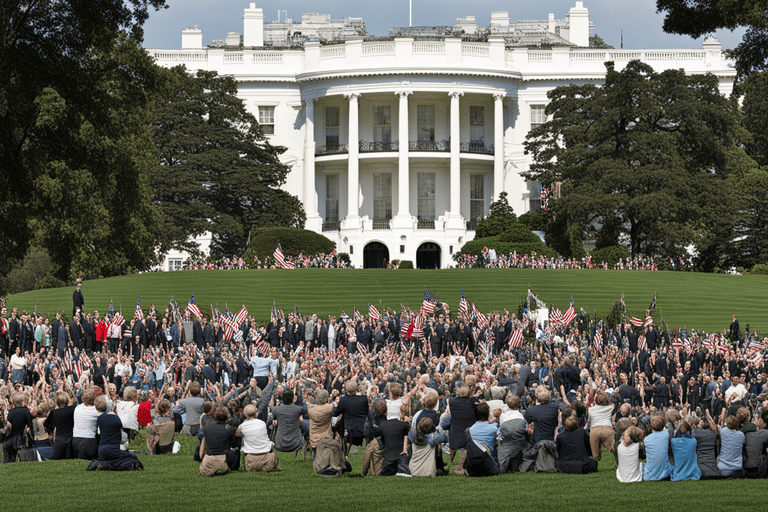
As the years roll by, the Easter Egg Roll remains an enduring tradition, connecting generations through the simple joy of rolling eggs on the White House lawn. This time-honored event, which began in 1878, has seen several transitions and adaptations, evolving into a beloved national celebration.
Over the years, the White House has introduced innovative elements, such as celebrity appearances, interactive games, and themed activities. Ensuring the tradition’s relevance for each new generation. The transition from a small-scale gathering to a nationally recognized event has allowed the Easter Egg Roll to leave an indelible mark on the White House’s cultural legacy.
Despite changing times, this celebration continues to serve as a symbol of unity, bringing together families from diverse backgrounds to share in the timeless joy of rolling colorful eggs on the South Lawn. In essence, the Easter Egg Roll’s enduring nature mirrors. The White House’s commitment to preserving traditions while embracing the spirit of innovation.
Underground Tunnels
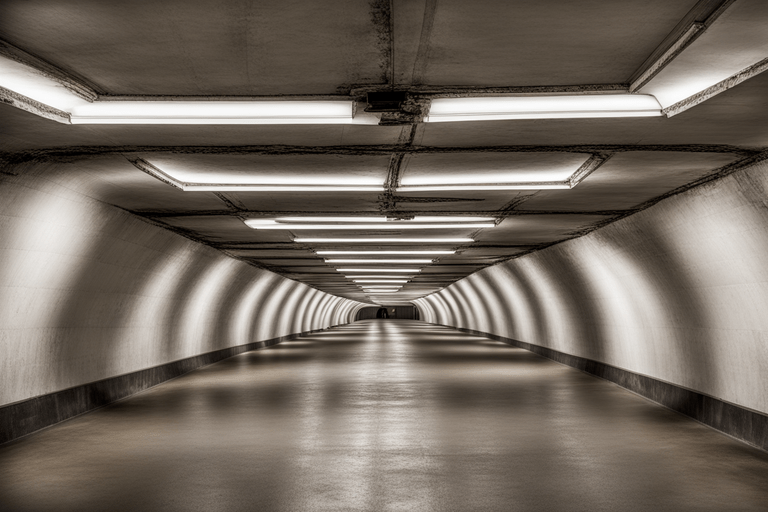
Beneath the White House lies a network of tunnels connecting it to nearby buildings. The Treasury and the East Executive Avenue. This intricate subterranean passage system, initiated during Franklin D. Roosevelt’s presidency, serves a multifaceted purpose.
Beyond providing secure passageways for the President and staff, these tunnels facilitate efficient communication. Coordination between different branches of the government. Transitioning from mere conduits for security, the tunnels also house essential utilities. Ensuring seamless connectivity and functionality throughout the interconnected structures.
Over the years, these subterranean pathways have witnessed historical transitions, evolving from strategic wartime measures to integral components of daily governance. Additionally, the tunnels contribute to the White House’s ability to respond swiftly to emergent situations. Showcasing the adaptability and foresight embedded in the infrastructure of the presidential residence.
This subterranean network, shrouded in secrecy, symbolizes the complex web of interconnected responsibilities. Strategic planning that underpins the daily operations of the White House.
Tunnels of Secrecy
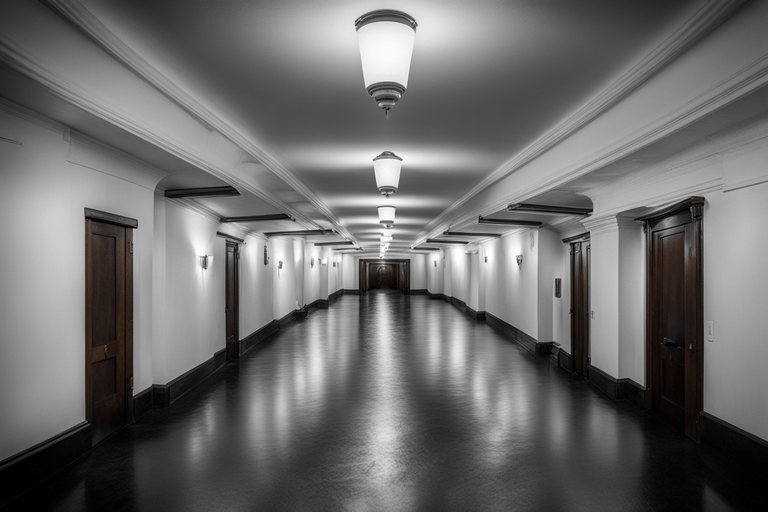
Transitioning silently beneath the surface, the White House tunnels embody the clandestine nature of presidential movements. Serving dual roles, these underground passageways. Initially designed for security during wartime, have undergone transitions to become integral components of day-to-day operations.
The labyrinthine network, expanded during subsequent presidencies, seamlessly connects the White House to essential governmental structures like the Treasury and the East Executive Avenue. Transitioning from their original military purpose, these tunnels now facilitate discreet access for high-profile visitors and dignitaries.
The covert nature of the tunnel system allows for confidential meetings and swift, unobtrusive transitions between locations. Over the years, technological advancements have further enhanced these subterranean pathways, incorporating secure communication channels and emergency response capabilities.
These underground conduits represent a unique facet of the White House’s infrastructure. Seamlessly blending historical necessity with contemporary functionality. Embodying the adaptability required to meet the evolving demands of the presidential office.
Movie Theater
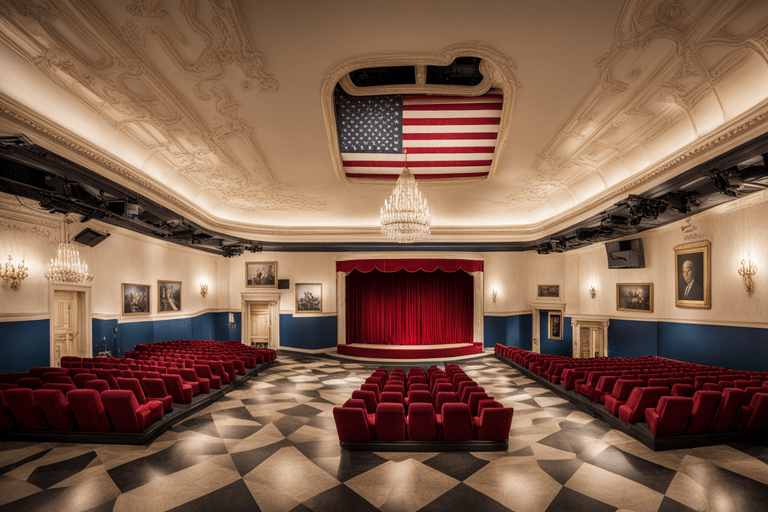
In 1942, President Franklin D. Roosevelt added a movie theater to the White House, marking a transition from traditional forms of entertainment. This cinematic addition reflected a broader cultural shift during World War II. Highlighting the importance of film as a medium for both escapism and education.
Over the years, the White House movie theater has undergone several transitions. Adapting to advancements in technology and shifting preferences in entertainment. Today, this historical venue remains an exclusive space, providing the First Family. Their guests with a private retreat to enjoy films and documentaries.
Transitioning from its initial role as a wartime diversion. The White House movie theater continues to be a place where leaders can unwind. Fostering a sense of normalcy within the presidential residence. The enduring presence of the movie theater symbolizes the presidency’s ability to adapt to changing times. While preserving elements of leisure and relaxation for the occupants.
Presidential Premiere
The White House movie theater is a venue where history and Hollywood intersect. Established during President Franklin D. Roosevelt’s administration in 1942, this cinematic addition marked a unique shift in the purpose of a presidential space. The decision to introduce a movie theater reflected a broader cultural transition. As film emerged as a powerful medium for both entertainment and communication during World War II. Over the years, the White House movie theater has witnessed numerous transitions. Adapting to advancements in technology and shifting trends in cinema.
Today, it serves not only as a space for leisure and relaxation for the First Family and their guests. But also as a venue for private screenings and special events, connecting the worlds of politics and entertainment. This transition from political discussions to cinematic experiences underscores the multifaceted nature of the White House. Its ability to embrace diverse aspects of American culture.
Oval Office Reshuffling
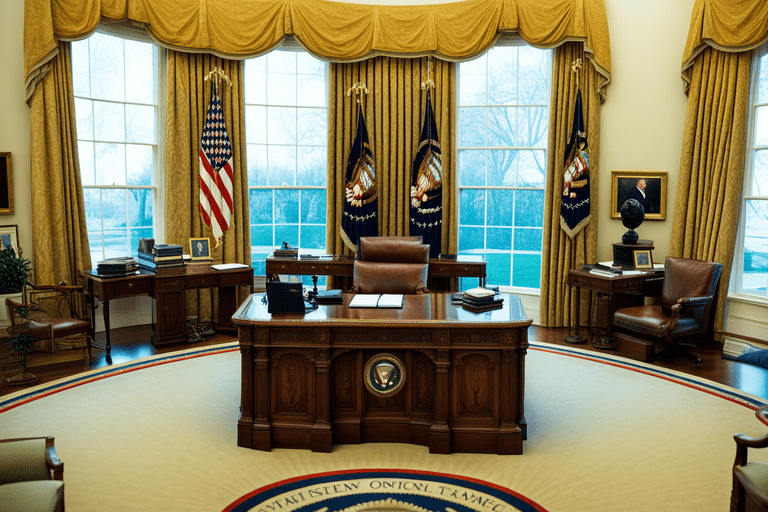
The Oval Office, relocated several times within the White House. Its current location established by President William Howard Taft in 1909. This significant transition marked a deliberate effort to enhance the functionality and accessibility of the presidential workspace. Initially situated on the second floor. The office was moved to the West Wing during the construction of the executive offices.
The move, overseen by President Taft, aimed to provide the President with a more centralized and efficient working environment. Transitioning from its previous locations, the Oval Office’s present position on the southeast corner of the West Wing symbolizes a commitment to both tradition and adaptability.
Over the years, various Presidents have introduced personal touches, reflecting their unique leadership styles and preferences. This continual transition within the White House structure underscores the ever-evolving nature of the presidency. Its ongoing efforts to meet the needs of each occupant while preserving the historical significance of the Oval Office.
Shifting Seats of Power
The ever-changing location of the Oval Office symbolizes the fluidity of power dynamics within the White House. Transitioning through different positions within the mansion, the Oval Office has mirrored the ebb and flow of political influence. Originally situated on the second floor. It underwent a significant transition to the West Wing during President William Howard Taft’s administration in 1909.
This move aimed to streamline presidential operations and enhance the proximity to key advisors. Over subsequent presidencies, the Oval Office has witnessed additional transitions, each reflecting the evolving nature of the presidency. The fluidity in its positioning within the White House architecture serves as a metaphor for the adaptability required in the ever-changing landscape of American governance.
From Franklin D. Roosevelt’s modifications during World War II to subsequent refurbishments by different Presidents. The Oval Office’s dynamic location reflects the continuous shifts in political strategies. The administrative priorities over the course of U.S. history.
Home to Many Pets
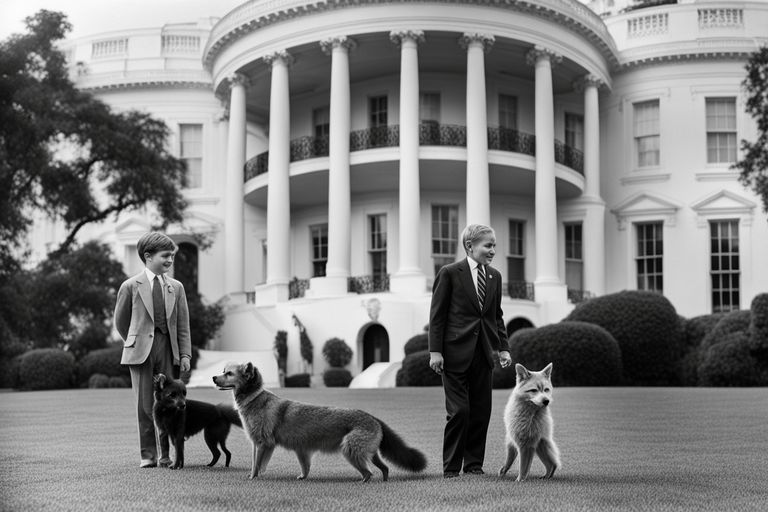
From dogs and cats to alligators and raccoons, the White House has been home to a variety of presidential pets. Transitioning through administrations, these animal companions play diverse roles—offering comfort and serving as unofficial mascots.
The tradition of having pets in the White House dates back to Thomas Jefferson. Who kept a mockingbird and two bear cubs. Over the years, different Presidents introduced their furry and feathered friends, showcasing a personal touch to the presidential residence. These pets often become part of historical anecdotes. Adding warmth to the formal setting and highlighting the human side of the presidency.
Presidential Menagerie
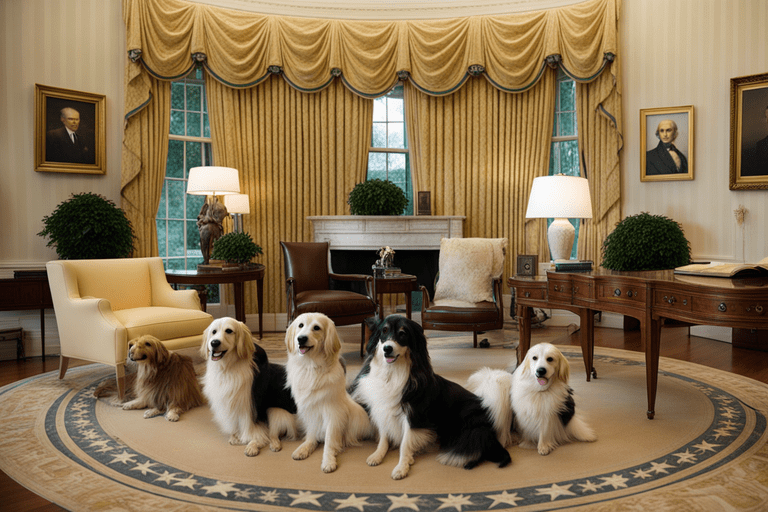
The menagerie of White House pets adds a touch of warmth to the presidential abode. These animals, ranging from dogs and cats to more exotic companions, provide a unique continuity amidst the changing political landscape.
Over the years, various Presidents have introduced their beloved pets, creating a tradition that spans administrations. The transition from formal political discussions to the joyous presence of these animals. It reflects a more intimate and human side of the presidency. These pets often become cherished members of the First Family. Contributing to the vibrant tapestry of life within the White House.
Presidential Rose Garden
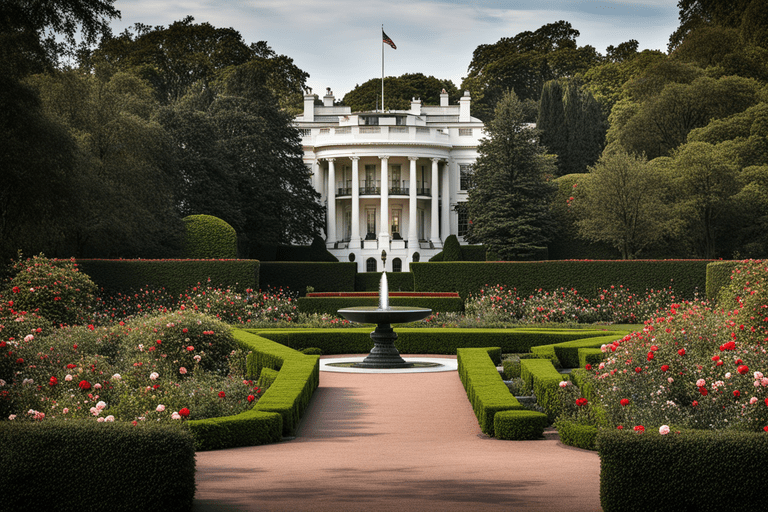
The iconic Rose Garden, planted by First Lady Ellen Wilson in 1913. Undergoes various redesigns but remains a picturesque outdoor space. Transitioning through different presidencies, the garden has been modified and refurbished to reflect the personal preferences of each First Lady.
For instance, Jacqueline Kennedy introduced a more formal design in the 1960s, emphasizing geometric patterns. The garden often serves as the backdrop for important events, providing a serene setting for ceremonies and announcements. The essence of the Rose Garden as a symbol of beauty, contributing to the White House’s historical charm.
Blooms of Legacy
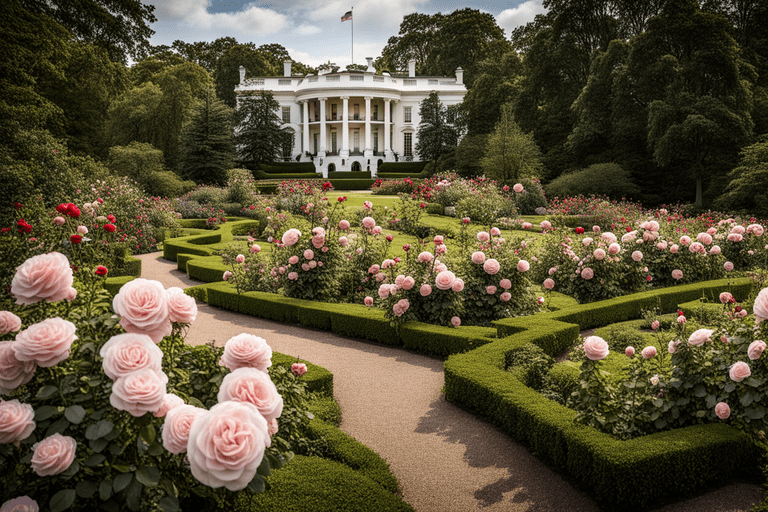
The ever-blooming Rose Garden stands as a symbol of the enduring legacy of the First Ladies. Who contributed to its vibrant beauty. Through various presidencies, each First Lady has left her mark on the garden. Introducing unique floral arrangements and landscaping designs.
Lady Bird Johnson, for instance, enhanced the garden’s environmental impact by planting wildflowers. The garden often undergoes seasonal transitions, showcasing a spectrum of colors and fragrances. This living canvas, nestled within the White House grounds, remains a testament to the First Ladies horticultural influence. Their collective dedication to preserving the natural beauty of the presidential residence.